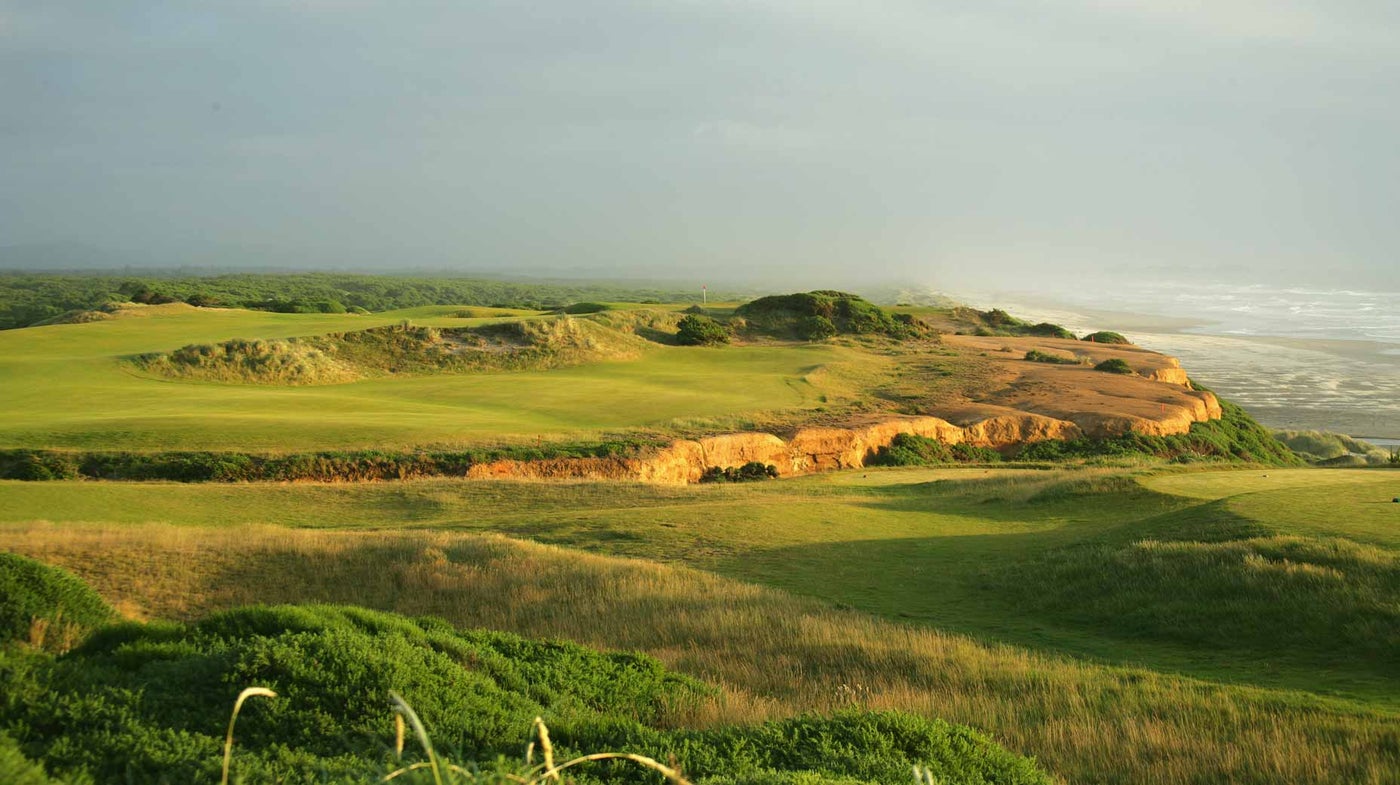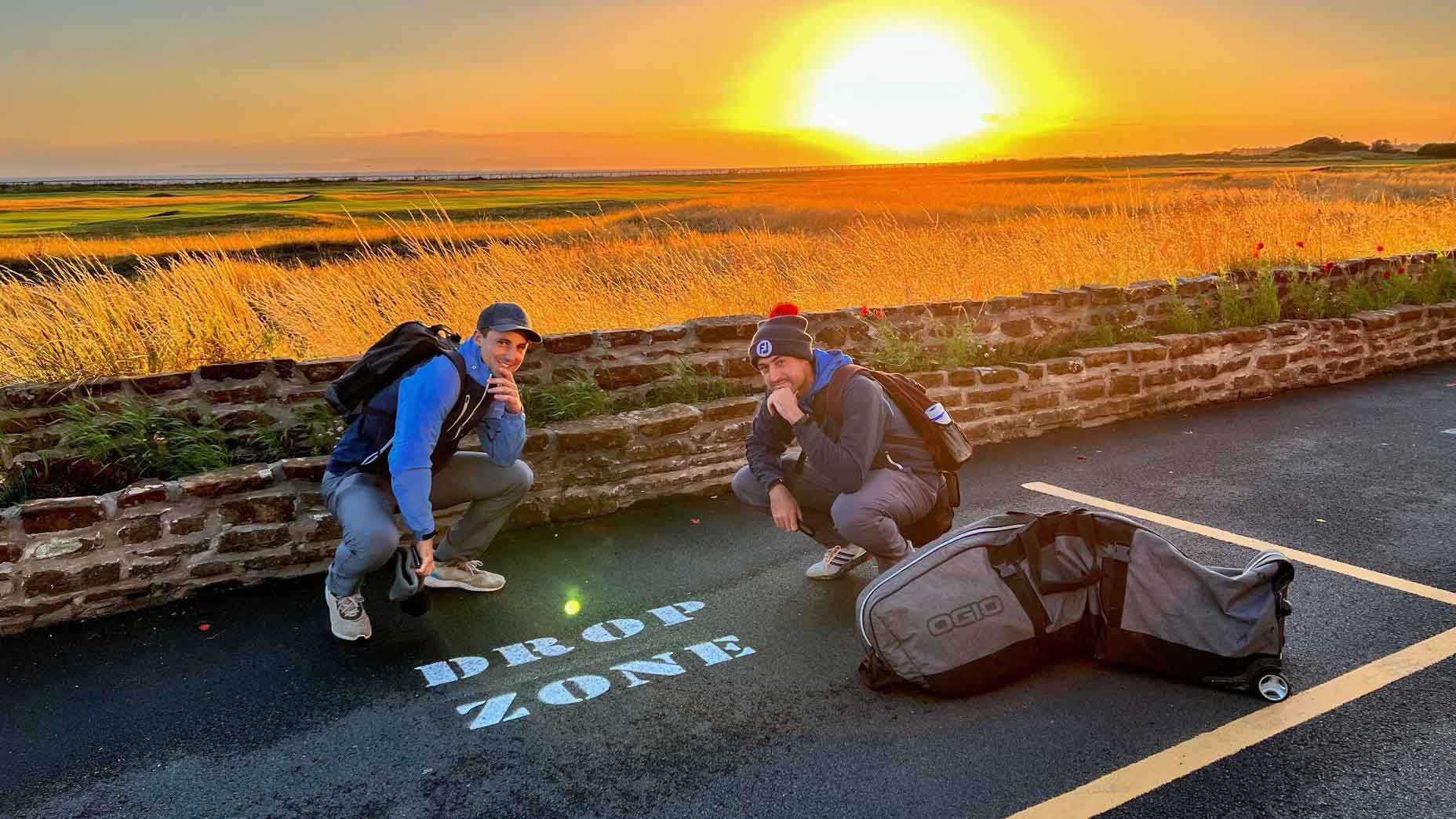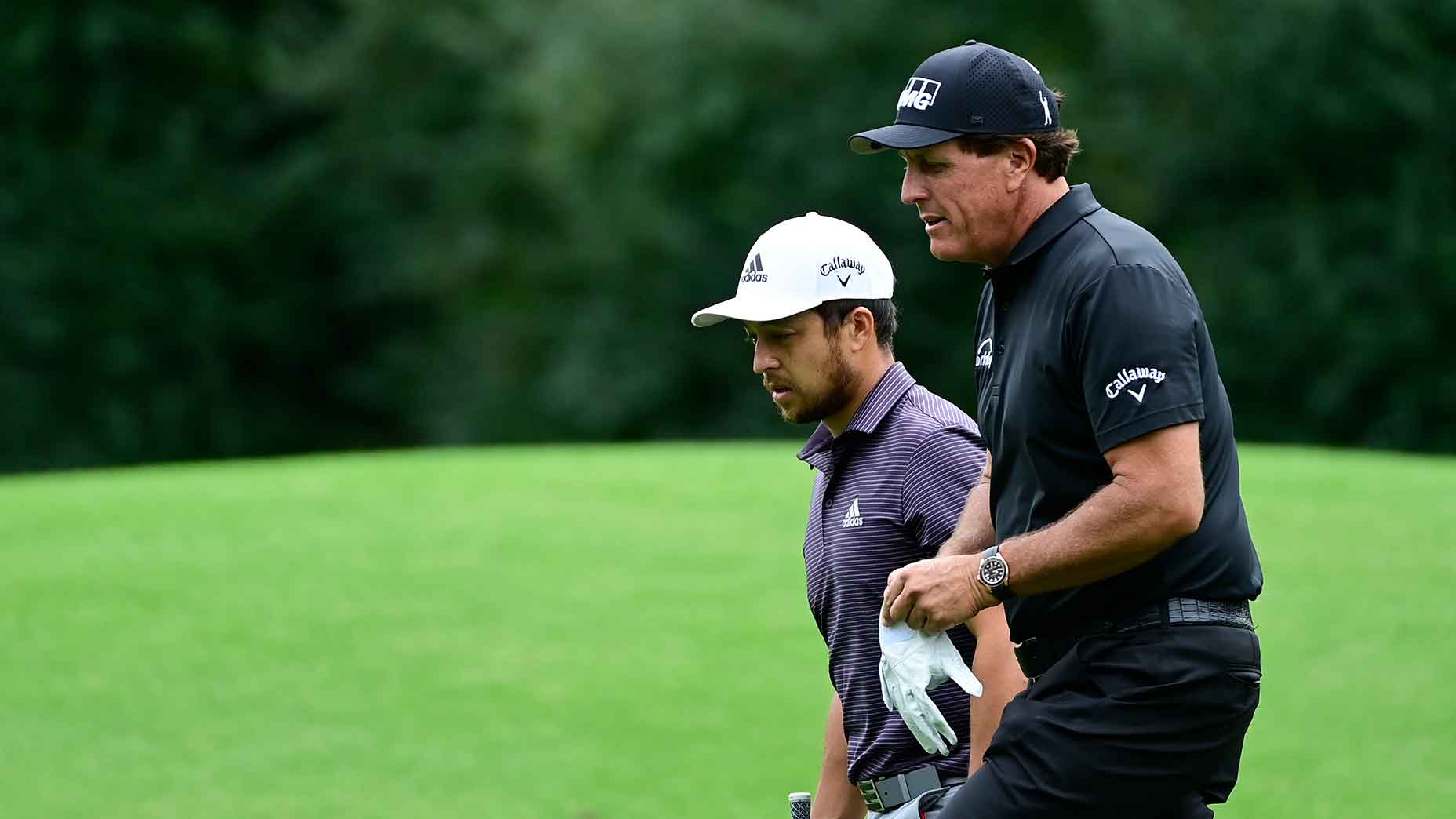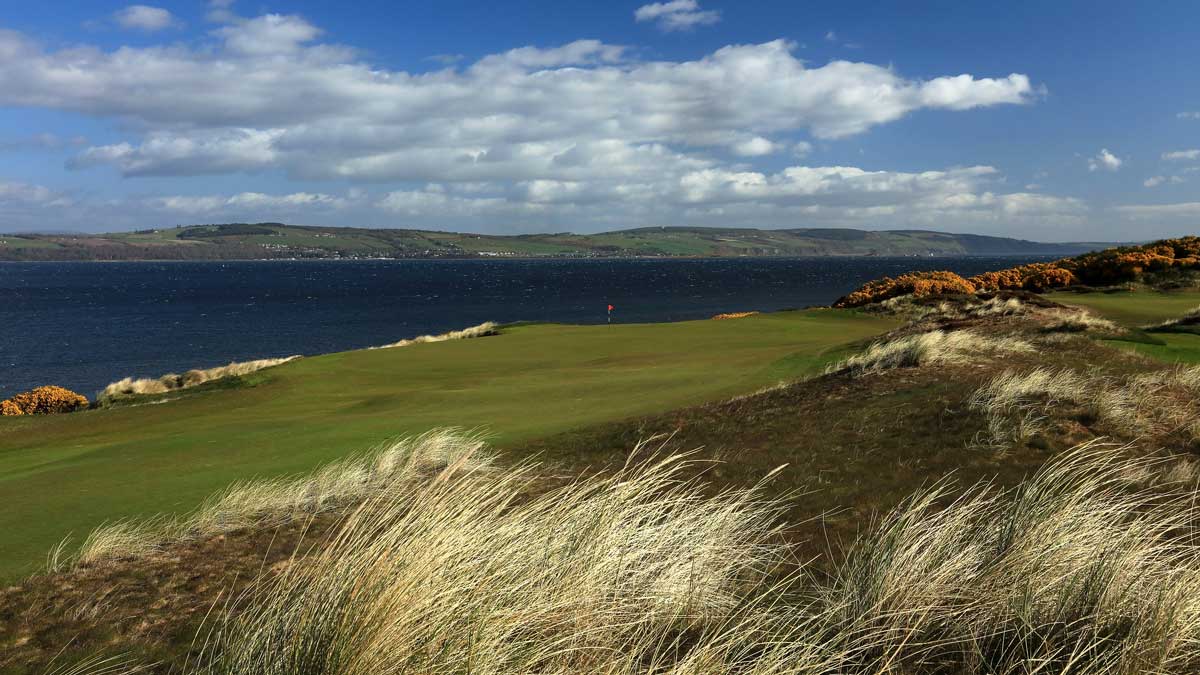It began as a single golf course in a tiny town on the Oregon coastline, a pie-in-the-sky brainchild of a wannabe golf course developer and a wannabe Scottish golf course architect. Together, David McLay-Kidd and Mike Keiser built their first golf course, Bandon Dunes — but they had no idea they were spawning a revolution in the process.
In the years that followed, Bandon expanded while its Dream Golf cousins, Cabot Links and Sand Valley, opened up in its footsteps. Some dozen golf courses later, Bandon’s lasting legacy is as an idea: That North America can have true links golf and that it can have remote golf courses that turn into bucket-list destinations. It’s a movement. It just didn’t start that way.
On this week’s Drop Zone podcast, we start at the beginning and work our way forward. What was Bandon before it was a golf course? How did a coal mine spawn Cabot Links? Why choose another tiny town — Rome, Wisc. — as the site of Sand Valley?
NOTE: This story was built for audio, so we’d recommend you LISTEN to this one on Apple Podcasts, on Spotify, on Podbean, or really anywhere you find your podcasts. Otherwise, you can dive into a portion in the text below.
THE BEGINNING
The story of Bandon Dunes begins with David McLay-Kidd, a Scottish 26-year-old who’d dreamt of becoming a golf course architect but had no concrete path to making that happen.
David McLay-Kidd: So back in 1994, I was 26 years old and working for the Gleneagles detail in Scotland. My father was a golf course manager and I was working for the development division of that that detail. And I was playing all the golf parks; I was a wannabe golf course architect. I’d done a couple of little things, but nothing really of any note. And Mike Keiser was friends with Rick Summers, who’s the current owner of PGA Golf Magazine.
And Mike said to Rick Summers, ‘I’ve got this piece of land on the Oregon coast. I want to build an authentic Scottish Irish links experience. Who do you think I should hire? I’m thinking to hire, y’know, Tom Fazio or Jack Nicklaus or Pete Dye.’
And Rick said, ‘Well, you should hire a Scottish golf course architect if you want something authentic.’
And Mike chuckled and said, ‘I would! But they all died 100 years ago at this point.’
It wasn’t just McLay-Kidd who was an unknown in the golf world. Mike Keiser was, too. He’d made his money by bringing a fresh mindset to the greeting-card business decades earlier. He’d proven to be a smart businessman. But that definitely didn’t guarantee any success as a wannabe course developer. So as an outsider, his first instinct might have been to hire a big name architect, someone from the establishment to give his project credibility — but maybe had it in the back of his mind that a fellow outsider would be a more proper fit. So he invites David McLay-Kidd to the remote site on the Oregon coast to check things out.
DMK: And so I arrived on site with my dad sort of holding my hand. And we walk the 1600-acre. Mike Keiser wasn’t there; I’d never met him yet. His caretaker, Shorty Dow, who was even then in his 70s, was our chaperone for the week.
So David and his father walked the property with this caretaker, Shorty Dow, and they’re thinking to themselves, ‘What if Keiser doesn’t know any better? What if he might hire a no-name? But Shorty keeps asking for McLay-Kidd’s business card. And eventually he gives him one. And when Shorty pulls out a stack of cards that he’s recently collected, McLay-Kidd realizes: every major golf course architect has walked the same site in recent weeks.
DMK: And I realized that Mike Keiser was pretty astute, and he was looking at every possible option for architects to do this.
This sets something off in McLay-Kidd. If he’s going to be an underdog, well, he may as well act like one.
DMK: At that point, I think I got a little fire in my belly, probably because I realize that this guy was never going to hire me. I don’t have anything to show. There was no way! I was 26. So he’s going to hire some big name instead. But hell, I’m not going to leave here with my chin on my chest. I’m gonna leave with my head held high.

So I went to the local drugstore. I bought a dozen sheets of posterboard and a few marker pens and I wrote what would now be considered a PowerPoint presentation. I did it on posterboards with markers pens. And Mike Keiser flew in a few days later in his private jet with some of the executives from Kemper Sports and some of his buddies. And I laid out half a dozen or so poster boards that told Mike Kaiser, this rich guy from Chicago with a great piece of land, what it would take to build a true, authentic links course in America. And I did so with a little chip on my shoulder because I figured, with my relatively limited knowledge of links golf in America, that there was nothing authentic.
I was told Pebble Beach was a links course. Doesn’t look like it to me! I was told, you know, the latest golf course by whichever PGA pro you want to pick in the mountains of Southern California was a links course, which was the farthest thing from the truth. So when I painted a scenario to Mike Kaiser, I said, ‘Hey, if you really want to build a true links course in America, here’s what it takes.’ And I had a half a dozen points that were absolutely critical, such as:
-You can’t have golf carts. There’s no golf carts in the British Isles. You walk!
-There is no fancy clubhouse on the ocean. That’s where you put the best green! The clubhouse is back in a corner. The best land is golf.
-The fairways aren’t flat; they’re pitching and tumbling.
-There aren’t any lakes. There’s no babbling streams.
-There’s no cart paths.
-The grasses we use are these old-style firm grasses. Back then, I may even have told them there’s no irrigation. Can’t quite remember if I said that or not.
-The bunkers aren’t these amoebous cloverleaf shapes. They’re these polt bunkers that are there to punish the bold, not to beat up on the weak.
And as I went through this explanation of links golf, Mike had a wry smile on his face, and his cohorts laughed openly out loud at the ridiculousness of such a thought in the sophisticated golf market of the United States. And I assumed that when my father and I left the very next day, we would never hear from Mike Keiser again. Our crazy Scottish ideas of golf in America were just that. What American golfer would traipse all the way to the southern Oregon shores to play golf in the wind and rain and walk and then find himself an eight-foot deep pot bunker surrounded by fescue grasses and pitching fairways where not a single flat lie is available. Such a scenario could never, ever work.
So at this point, it seems like there’s not much hope for McLay-Kidd’s vision for Bandon. His vision is just too different. His resume is too thin. His presentation lacked professionalism. But then something happens: Keiser calls him back. ‘Did you really believe all that stuff you said?’ he asks. Clearly McLay-Kidd’s presentation struck a chord. Keiser really does want a true links course.
DMK: Everything I said that others might have laughed at when they compared it to American golf, Keiser compared to his experiences in the UK and Ireland, and it completely matched those experiences. The very things I was saying were the core, basic building blocks of the golf experience he so enjoyed in the United Kingdom. He just maybe hadn’t deconstructed it the way I was doing.
It’s important to remember that this point there wasn’t much golf on this continent that actually match the experience of links golf in the UK. If Keiser has anything in mind, it’s projects that are 100 years old: Pine Valley or National Golf Links. He found something appealing in the pre golf-cart era of the game, and he and McLay-Kidd have that in common.
DMK: He’s certainly not looking at post-World War II golf in America, where the golf cart took over, residential development started to move in and the development of very, very highly genetically-modified grasses starts to become the order of the day. All these things. Irrigation! There’s a huge one. The post-World War II creation of complex irrigation systems.
All of those things were intended to make the game better. I think Mike Keiser looked, and although he may not have put his finger on it, he knew that that wasn’t what he enjoyed. I look at it as a Scot and I could immediately see them. They were as clear as the nose on my face. Those building blocks that were added post-World War II had not, in fact, helped the game. They taken golf in a completely different direction that was alien to golf in the British Isles.
It’s a complete reversal of his expectations; suddenly things are going pretty well for McLay-Kidd. His vision for Bandon Dunes seems right on track — despite no real guarantees from his boss. He gets the invite back to come and develop a few more ideas, and then he gets invited back again, and then again, and this process goes on for three more years.
DMK: At no point in that three years did Mike Keiser ever say to me, ‘You’re the guy.’

It’s late 1997 now, and finally McLay-Kidd gets the green light to go ahead and actually start building the golf course — sort of. He’s still on probation.
DMK: Mike openly told me many times, if you build anything I really don’t like, my fallback is I’ll just fire you and hrie somebody that knows what the hell they’re doing. And he would openly tell me that. So not only did I never get the job, even when I got to start the job, there was this veiled threat that if I ever screwed up at any point, he would just kick me off the horse and put someone else on the horse.
So what happens next? How does David McLay-Kidd get from there to where we are now? What does any of this have to do with a 25-year-old Canadian with a startup travel company who wants to build a golf course in a tiny town in remote Nova Scotia? You’ll have to listen to find out! It’s free, it’s fun, and it’s in your ears. You can listen on Apple Podcasts, on Spotify, on Podbean, or really anywhere you find your podcasts. Enjoy!












